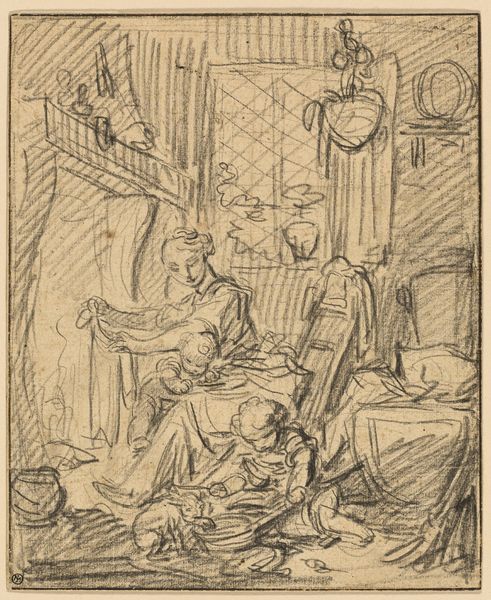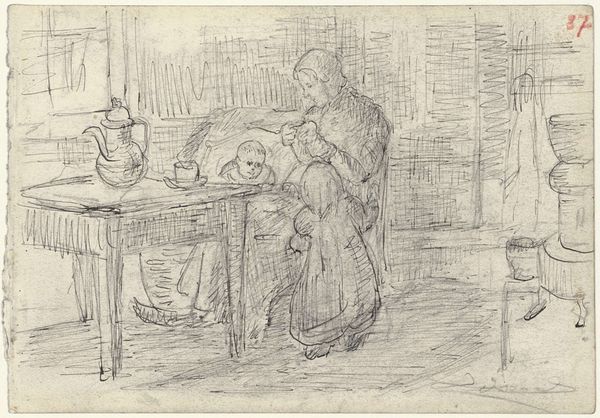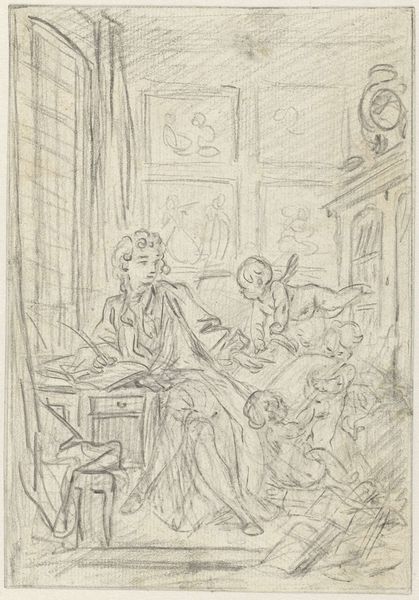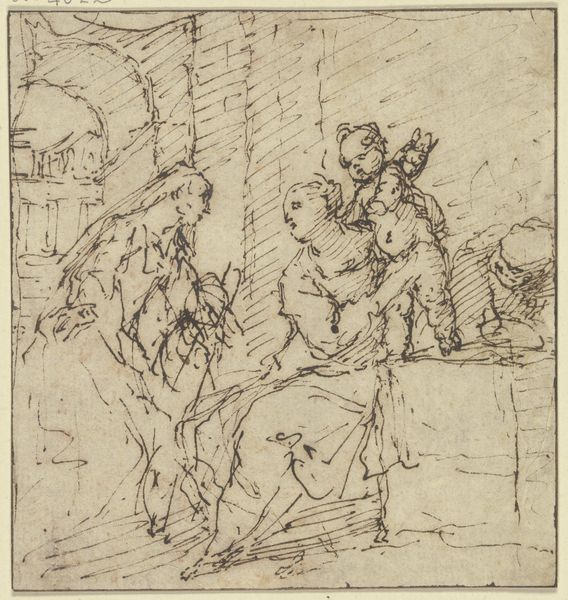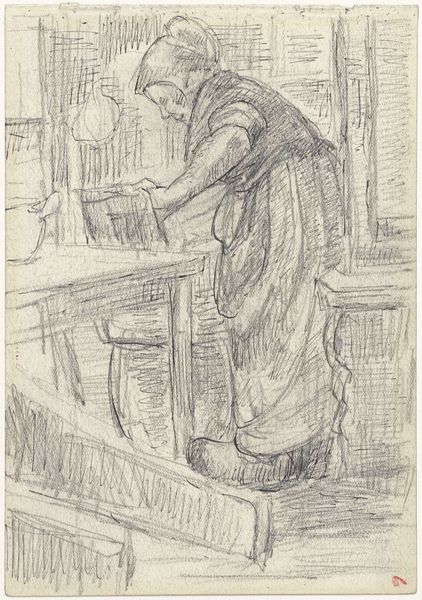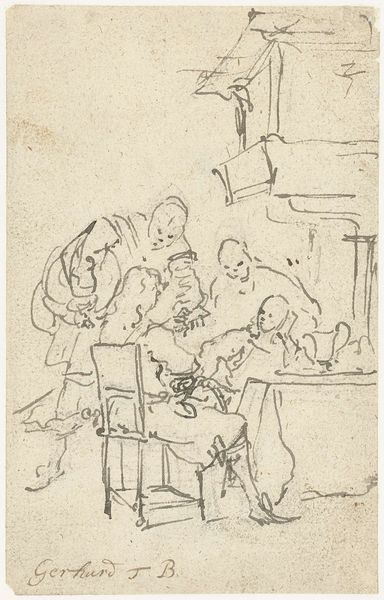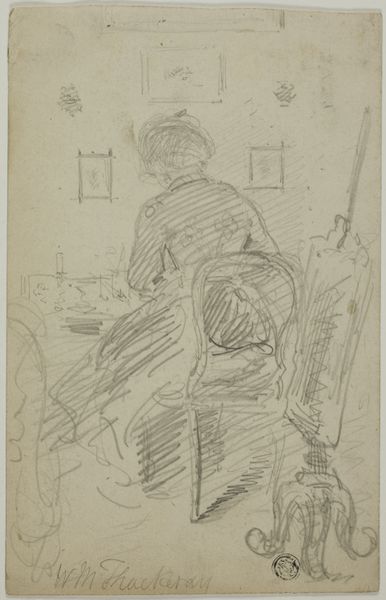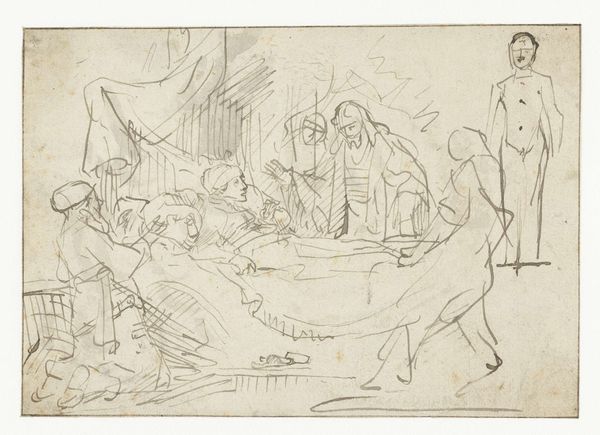
drawing, ink, pen
#
drawing
#
comic strip sketch
#
toned paper
#
pen sketch
#
cartoon sketch
#
figuration
#
personal sketchbook
#
ink
#
ink drawing experimentation
#
romanticism
#
pen-ink sketch
#
line
#
sketchbook drawing
#
pen
#
genre-painting
#
storyboard and sketchbook work
#
sketchbook art
Dimensions: height 88 mm, width 75 mm
Copyright: Rijks Museum: Open Domain
Curator: This ink and pen drawing, simply titled "Hekelende vrouwen," or "Hacking Women," was created by Jacob Ernst Marcus sometime between 1784 and 1826. It’s currently held in the collection of the Rijksmuseum. What are your first thoughts? Editor: It feels almost like a dreamscape, or a memory. The line work is so light and ephemeral, and the women are engaged in this repetitive, almost meditative activity. Curator: The drawing really showcases labor in a specific context. The term "hekelen" refers to the process of preparing flax, separating the fibers. Look at the tools: the hackling combs firmly placed in the woodwork frame on the left. The composition directs our attention to their gestures and the repetitive motions involved in transforming the raw material. It’s a direct look into the materiality of the period. Editor: The hackling combs resemble combs or maybe even rakes or even prison bars almost, but certainly. I find the imagery so interesting – you’ve got this domestic scene, but outside, there’s this rather prominent church steeple. Perhaps it speaks to a societal emphasis on moral fiber. What stories do you think they told each other? Curator: Precisely, the contrast between domestic and societal realms enriches it. And it prompts reflection on social roles and labor practices of the time. I wonder what ink or pen Marcus used, and how that particular nib impacted the line weight. Was it a mass-produced pen? A handmade ink? That tells its own history. Editor: Right. I find myself drawn to the group of figures almost in shadow near the left. They’re just barely defined, watching these women at work. Perhaps this arrangement mirrors contemporary expectations, of watchful spectators scrutinizing feminine industriousness. Curator: So well observed. I suppose examining such drawings through a contemporary lens invites such interpretations of feminine identity and societal gaze. This piece certainly highlights the beauty and meaning found in what may have once seemed like everyday labor. Editor: Agreed. There's a timeless quality to the scene despite its specificity in historical detail. It reminds us of the layered narratives embedded even in seemingly simple depictions.
Comments
No comments
Be the first to comment and join the conversation on the ultimate creative platform.
